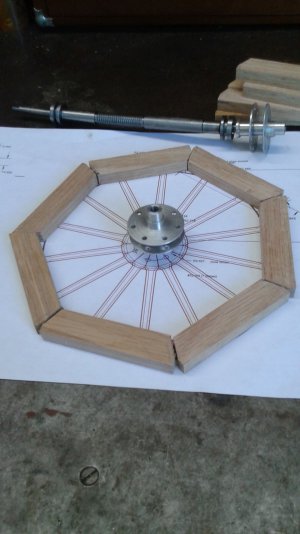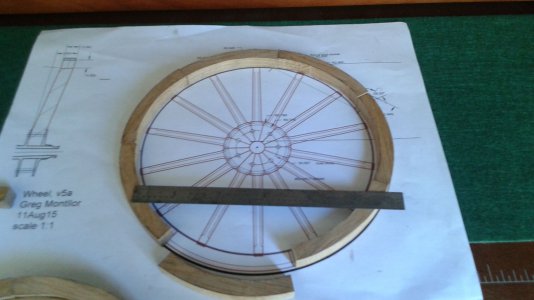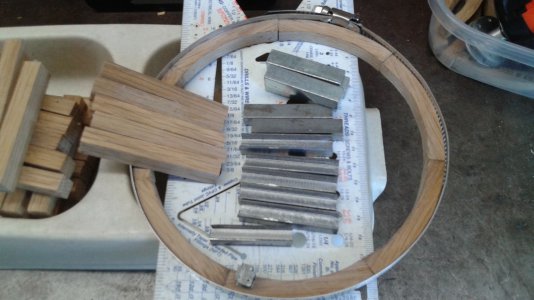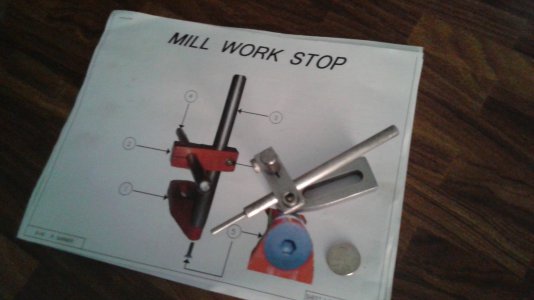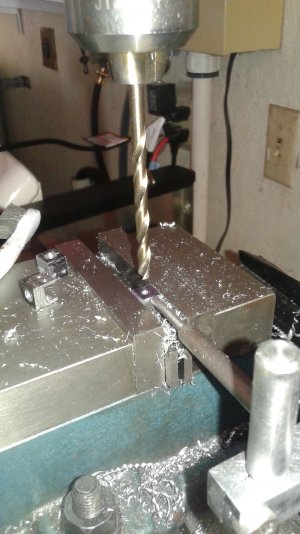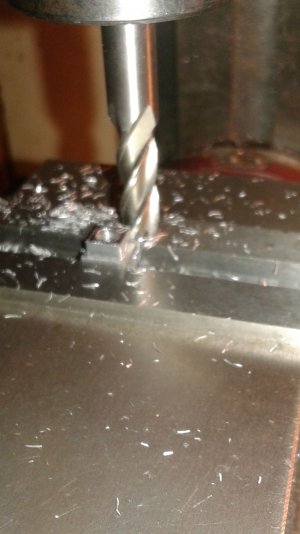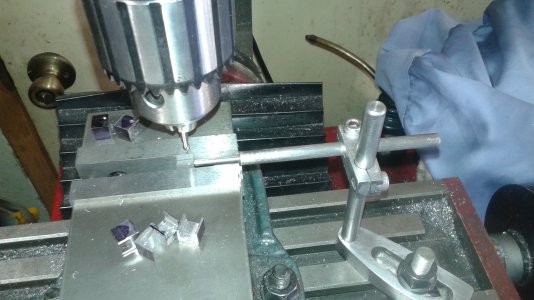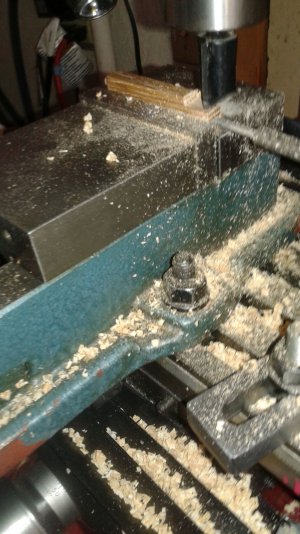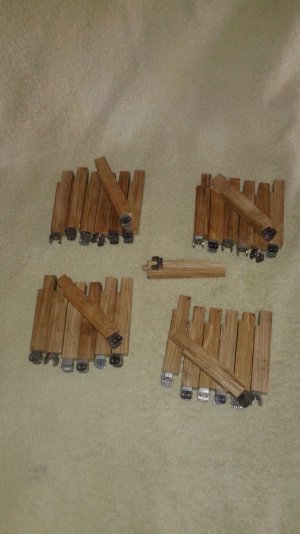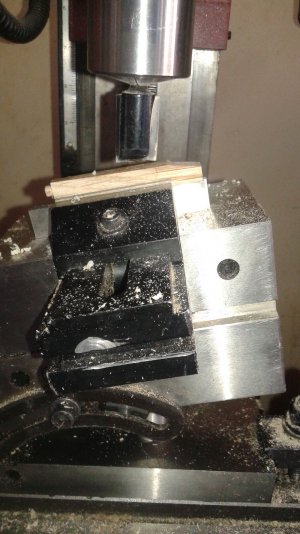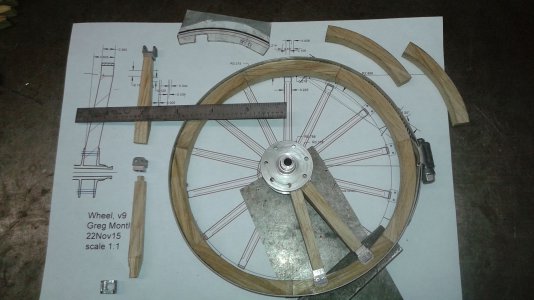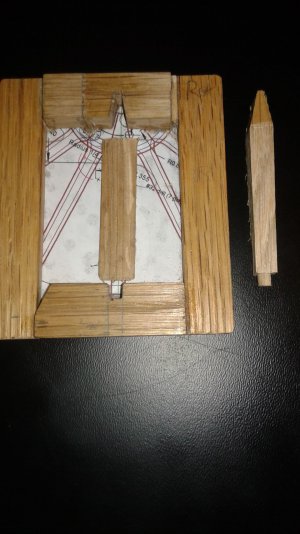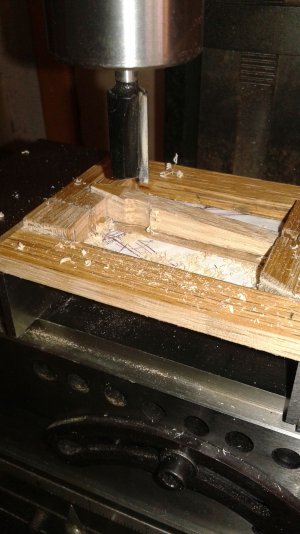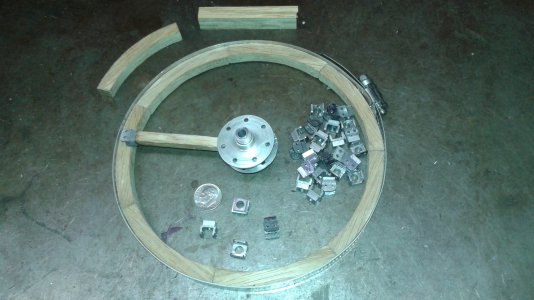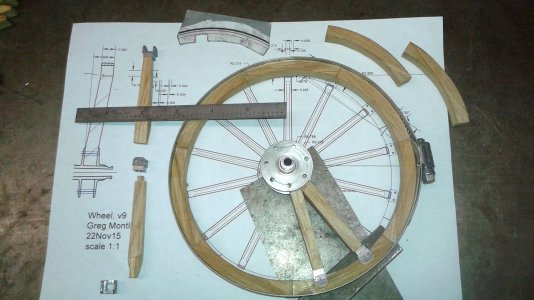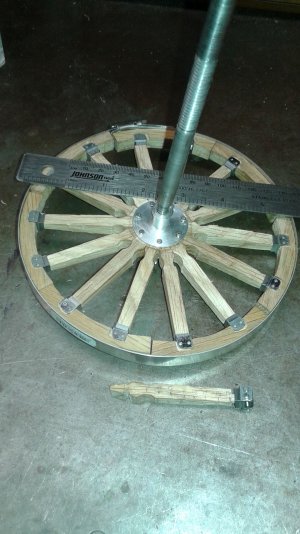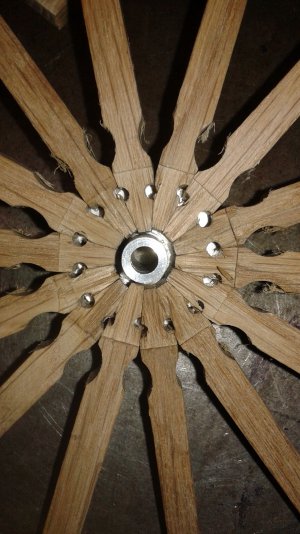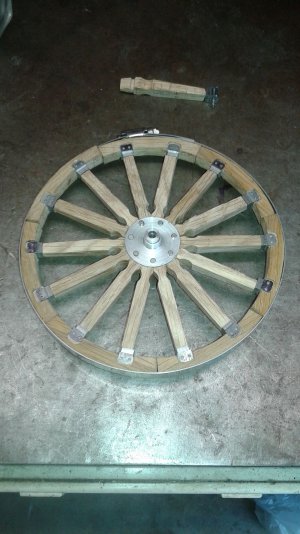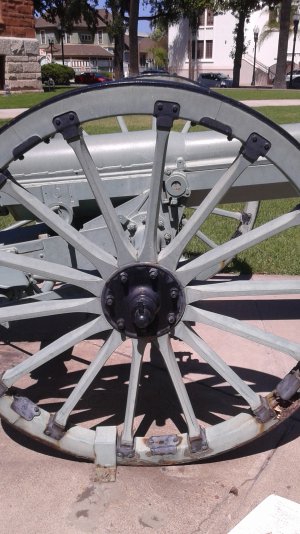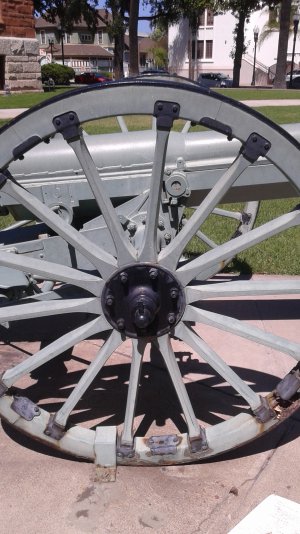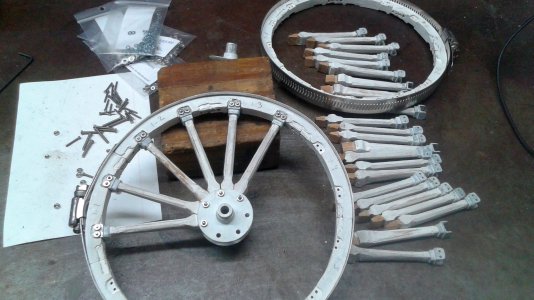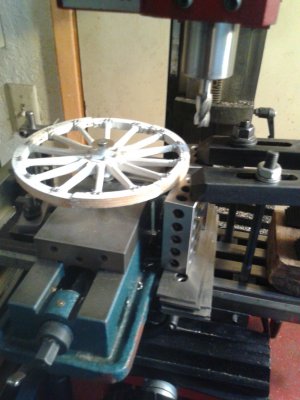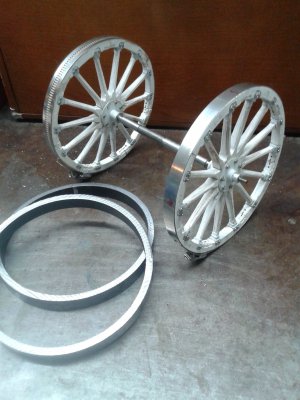Status Update: Wooden Wheels in progress
For the past few months I've been working on the cannon's wooden wheels. As the image in my prior message showed, these are fairly complex assemblies and I've been feeling my way through the process.
I need to produce 42 wooden pieces, the 14 spokes and 7 fellows for each wheel. ( A "fellow" is a segment of a wooden wheel's rim.) I have finished the basic shaping of the fellows.
Each spoke fastens to the fellow with a small steel spoke-shoe. I just finished the milling of these 30+ shoes (I have a few spares.), each requiring about 12 milling operations (plus hacksawing and hand filing). I quickly recognized the productivity value of a vise work stop, and took a break from the wheel work to make one that proved very useful. Below is the work stop in action as I machine a spoke shoe (center drilling for the 0.063 hole used to bolt the shoe to the fellow.)
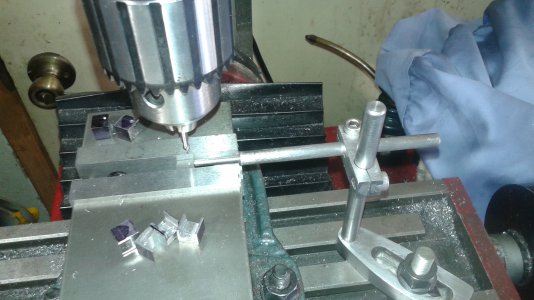
So far, I have done one prototype spoke. Each spoke will be formed from a 0.5" x 0.36" x 2.8" piece of oak and requires about 12 machining operations. Because of the small size and odd angles, ordinary woodworking tools (sander, router, jigsaw) don't seem to work well enough. Given that I need to make about 30 spokes, I need to get a more productive process going. Based on my prototype, the first step will be on the metal lathe, the rest on my mini-mill/drill, several cuts using a router bit. The oak machines nicely, except for the sawdust. Because each of the four long faces have two different angles, I plan to make a set of fixtures that will position the spoke in the mill vise in all the needed positions. (Or maybe use my sine-vise.)
Below is another image showing a wheel mockup with a set of fellows temporarily held in place with a hose clamp, and the pile of spoke shoes. One shoe is assembled on the prototype spoke which sits in place in the wheel hub. The bottom four shoes, adjacent to the dime, show the shoe from top, bottom, left and right side views.
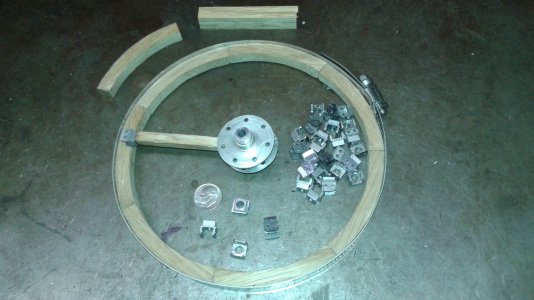
Not yet started are small steel joining plates that connect the fellows together. And I haven't yet figured how I will weld a strip of 14 gauge steel to form the tire.
From the gun on display at Orange County, here is the real-world object showing spokes, shoe, plate, fellows, and fasteners. As you see, this gun is painted gray and black. I haven't yet decided on the finish for mine. To be historically-correct, it should be a green/brown/white/black camouflage pattern. But I don't want to obscure the mechanical details.
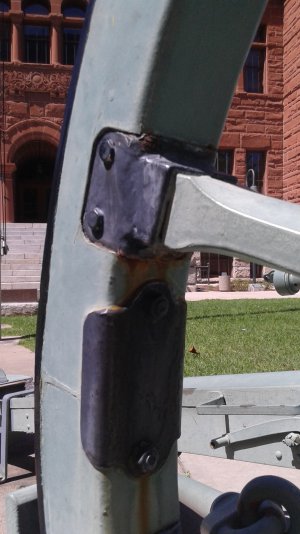
This week I hope to finish the spokes! I'll be glad to get the woodworking out of the way.
Greg
For the past few months I've been working on the cannon's wooden wheels. As the image in my prior message showed, these are fairly complex assemblies and I've been feeling my way through the process.
I need to produce 42 wooden pieces, the 14 spokes and 7 fellows for each wheel. ( A "fellow" is a segment of a wooden wheel's rim.) I have finished the basic shaping of the fellows.
Each spoke fastens to the fellow with a small steel spoke-shoe. I just finished the milling of these 30+ shoes (I have a few spares.), each requiring about 12 milling operations (plus hacksawing and hand filing). I quickly recognized the productivity value of a vise work stop, and took a break from the wheel work to make one that proved very useful. Below is the work stop in action as I machine a spoke shoe (center drilling for the 0.063 hole used to bolt the shoe to the fellow.)

So far, I have done one prototype spoke. Each spoke will be formed from a 0.5" x 0.36" x 2.8" piece of oak and requires about 12 machining operations. Because of the small size and odd angles, ordinary woodworking tools (sander, router, jigsaw) don't seem to work well enough. Given that I need to make about 30 spokes, I need to get a more productive process going. Based on my prototype, the first step will be on the metal lathe, the rest on my mini-mill/drill, several cuts using a router bit. The oak machines nicely, except for the sawdust. Because each of the four long faces have two different angles, I plan to make a set of fixtures that will position the spoke in the mill vise in all the needed positions. (Or maybe use my sine-vise.)
Below is another image showing a wheel mockup with a set of fellows temporarily held in place with a hose clamp, and the pile of spoke shoes. One shoe is assembled on the prototype spoke which sits in place in the wheel hub. The bottom four shoes, adjacent to the dime, show the shoe from top, bottom, left and right side views.

Not yet started are small steel joining plates that connect the fellows together. And I haven't yet figured how I will weld a strip of 14 gauge steel to form the tire.
From the gun on display at Orange County, here is the real-world object showing spokes, shoe, plate, fellows, and fasteners. As you see, this gun is painted gray and black. I haven't yet decided on the finish for mine. To be historically-correct, it should be a green/brown/white/black camouflage pattern. But I don't want to obscure the mechanical details.

This week I hope to finish the spokes! I'll be glad to get the woodworking out of the way.
Greg


